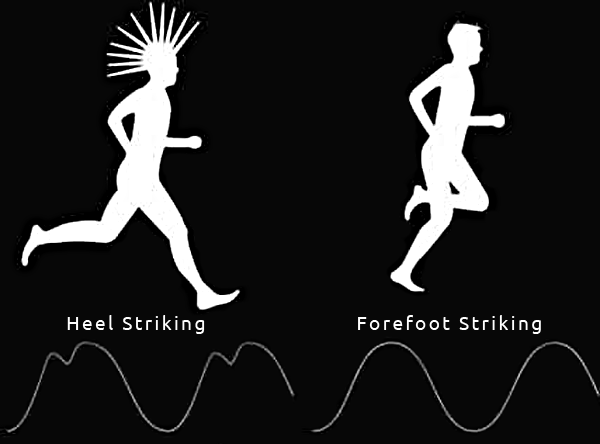Running Sandals Effect on Biomechanics
The human body is a complex system comprised of many integrated sub systems, that when working properly, flow together and facilitate one another precisely. How the body functions in relation to it’s movement or structure is called biomechanics.
Our body has developed over millennia to function most efficiently and resiliently under specific conditions--one of those key conditions is being barefoot. Narrow shoes with excessive cushion and raised heels are a recent input on the range of human development. Widespread adoption of over-engineered, restrictive footwear has occurred around the world in recent centuries, especially the last 40 years. However this type of shoe has hindered the function of our feet in much the same way the roots of a potted plant conform to its container. Our feet essentially adapt to their environment becoming the same shape as our shoes. This adaptation often causes long term biomechanical dysfunction leading to a reliance on our shoe-containers that ultimately causes imbalance and dis-ease.

Restricting the natural function of our feet compromises the first biomechanical link in a long chain of systems radiating up into the ankle, knees, hips and lower back. I am going to focus on how transitioning to minimalist running sandals can help the whole-body reclaim proper function, with an emphasis on the foot, ankle and lower leg.
There are 26 bones, 33 joints, 20 muscles and a whole slew of tendons & ligaments in each foot and ankle--all that to say this is a very complex appendage and, for most, underdeveloped and out of whack. Wearing unnaturally constraining footwear with muted soles and raised heels allows the muscles in your feet to atrophy due to under-use and dysregulation. In turn, your tendons tighten to pick up the slack, pulling joints out of alignment, creating a very fragile and dysfunctional foot and ankle. Conditions like plantar fasciitis, achilles tendonitis, and unstable ankles are common results.
Transitioning to flat soled, minimally cushioned running sandals along with stretching and other foot rehabilitation, will help rebuild muscles, loosen tendons and realign joints to create healthy resilient feet and by extension a healthy body.
Two specific ways running sandals improve the biomechanics of the foot and ankle:
- Closed toed footwear with a narrow toe box crams all your forefoot bones together like a can of sardines, creating the running equivalent of trying to play the piano while wearing mittens. All of your forefoot and toe joints should be able to move independently, gripping, stabilizing and adapting to the earth, functioning much like your hands. Running sandals allow the forefoot to spread out to it’s naturally intended state, giving your toes room to breathe and articulate. This not only increases balance, grip and stability, it reduces the risk of foot cramps, plantar fasciitis and other foot injuries.
- Minimal running sandals re-train the foot, ankle and lower leg to move properly, efficiently, and sustainably through increased proprioceptive feedback--from the ground. Most modern shoes, especially running shoes, are overdesigned to cradle your foot, stunting your natural biomechanics and keeping your feet from interacting with the terrain as they should. This encourages a longer less efficient stride and a joint battering heel strike. Minimal running sandals allow your foot to move naturally through a shorter more efficient stride, ending in a forefoot/midfoot strike that builds strong joint protecting, shock absorbing foot and lower leg muscles.

Given the complex integration of our body’s biomechanics--foot health and proper function will radiate up and improve the function of your whole body in these key ways:
- Lower leg muscles are now absorbing the shock that once went to your knees, creating both short and long term benefits. Joint inflammation is reduced, increasing joint mobility and allowing your connective tissue to function well reducing patellar tendonitis and other overuse injuries. In the long term this will reduce your chances of arthritis and other degenerative conditions.
- Zero drop soles help your hips to regain proper alignment. Because your heels are no longer artificially raised, your pelvis no longer has to compensate. The hips are the center of the body, and that when aligned create a healthy back and effective upper leg muscles.

All this builds to make you more durable, more capable, more efficient, and beyond all else, more human!
Author: Curtis Hall (@capt.curtis) is the Co-Founder and Head Creative at BAREfit Adventure Training, a fitness company based out of Louisville, Ky. BAREfit uses all upcycled and handmade equipment to train people to Make the World Their Playground.
www.barefitlife.com
Follow them at:
instagram.com/barefit.life
facebook.com/barefitlife






